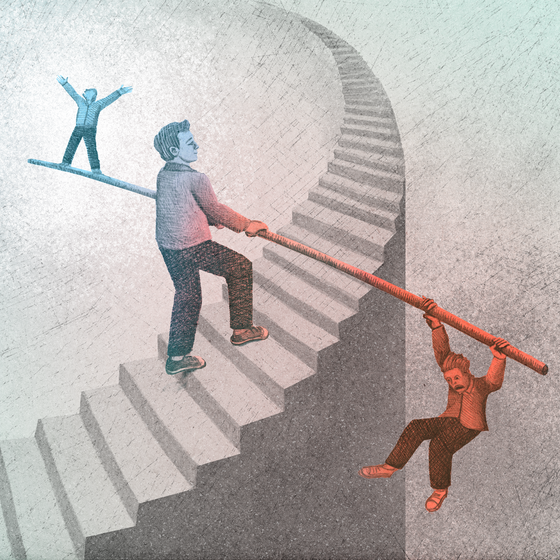Can Ambivalence Motivate Us to Act?
Fearing rejection, people are often reluctant to pursue the things they want most—a better job offer, a first date. New research by Professor Taly Reich and two Yale SOM colleagues demonstrates the way in which ambivalence can help encourage action despite the prospect of failure.
Ambivalence is uncomfortable. “Historically, it’s been viewed as an aversive state, as something people want to eliminate or reduce,” says Taly Reich, associate professor of marketing at Yale SOM. “I’ve already shown how that’s not always the case, and my new work builds from there, giving us a fuller picture of what ambivalence really is.”
“Ambivalence is this sweet spot of wanting something but being aware of the negatives in a way that lets you approach a decision you’d otherwise feel too threatened to approach.”
Published in 2016, the lead chapter of Reich’s dissertation demonstrated how people waiting to find out if they have achieved an uncertain outcome spontaneously cultivate ambivalence—keeping both the upsides and the drawbacks of the outcome in mind—as an emotional cushion against rejection or failure. Building on this finding, Reich’s new work reveals how people can willfully deploy this feature of ambivalence, using it to motivate action toward a desired, but uncertain, outcome—asking for a promotion at work, for example, or asking somebody on a date. In domains like these, where failure threatens how we view ourselves, ambivalence can actually help people to move forward.
“If you think only about how great something is, then you feel too threatened to act; and if you consider only the negatives of a choice then why even approach it?” Reich says. “Ambivalence is this sweet spot of wanting something but being aware of the negatives in a way that lets you approach a decision you’d otherwise feel too threatened to approach.”
Reich, with Professor Ravi Dhar and Ph.D. candidate Alexander Fulmer, used seven experiments to detail these findings. In one experiment, for instance, participants were told to imagine that they were offered their dream job, and then they were asked whether they would negotiate for more vacation days. Before deciding, one group listed the pros of getting more vacation days (low ambivalence), another group listed both pros and cons (high ambivalence), and a third group received no treatment. Nearly 80% of people who listed pros and cons said they would negotiate for more vacation days, while only 60% of those from the other two groups said they would.
Another experiment had people who were single at the time indicate how likely they were to ask somebody who resembled their “celebrity crush” out on a date. Again, those who were told to list both benefits and drawbacks of dating somebody like that were most likely to say they would ask the person out.
One important detail of the study, Reich says, is that “people don’t intuit these results, which means people aren’t taking advantage of them.” Studying this issue in the context of the celebrity crush experiment, Reich found that only 20% of people believed that listing pros and cons would increase the odds of asking someone out compared to listing only pros. “We’re documenting something really useful that people don’t know about but can use when they want to approach a decision they’re reluctant to approach.”
Also critical is that these results pertain only in cases where the choice poses a threat to one’s self. In research on situations where this is not the case—choosing between products, for example—ambivalence produces the opposite effect, leading to inaction rather than action.
“In all situations where people feel a choice threatens who they are, I want them to approach this choice with cultivated ambivalence. I want them to use these findings strategically.”
But Reich points out that most of the big decisions we make possess an element of self-threat; the outcome provides a partial measure of our worth, and failure often feels personal. That means that the key insight of this research has broad application. “In all situations where people feel a choice threatens who they are, I want them to approach this choice with cultivated ambivalence,” she says. “I want them to use these findings strategically.”
In the past when Reich has received job offers, for instance, she would actively consider both their benefits and drawbacks. The ambivalence she generated freed her to negotiate without fear of losing something precious. Those experiences, she says, made her wonder if people who tend to be ambivalent are actually more likely to negotiate.
“We so often reject ourselves, and here is a way to help us not do that,” says Reich.
